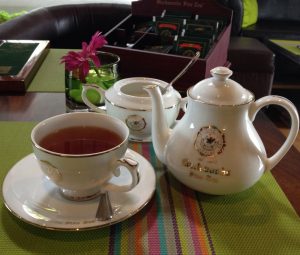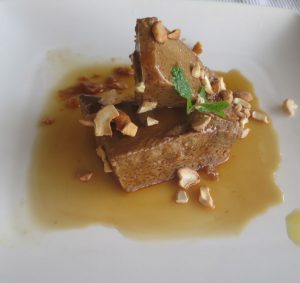I have been privileged to sample a little of Sri Lanka’s food and lifestyle as I have travelled from Colombo, to Polonnaruwa, Kandy, Tangalle, Galle and Bentota. Sri Lanka is a small island with a population of 20.48 million (2013), which is about 3 million less than Australia’s. It offers diversity in geography, natural beauty and food.
Spice
The road from Dambula to Kandy was bordered by lush spice gardens. In Sri Lanka spices are used in cooking, Ayurveda treatments and perfumes, soap and toothpaste. Commonly used culinary spices are cinnamon, cardamom, pepper, coriander seeds, turmeric, fenugreek, cumin, fresh curry leaves and lemongrass. Sri Lanka is renowned for quality spices and produces 80% of the world’s cinnamon.

Spicy curries are a speciality. They are based on fresh local vegetables, seafood, chicken, and legumes and to a lesser degree beef and lamb. Rather than one mixed dish at a meal, a number of curries are offered such as dahl, fish curry, beetroot curry, spiced potato, aubergine curry and bean curry.
Ceylon tea
The mountain areas provide the ideal environment for high quality teas. Tea production commenced in 1867 with about 19 acres of land. Sri Lanka (Ceylon) now meets 19% of the global demand for tea. It produces a wide variety of teas, including white, green, black and flavoured teas. Ceylon teas are amongst the finest in regards to flavour and aroma. I agree with this, having sampled quite a few during my visit. My favourites include white, jasmine and black cinnamon teas.

Rice
Sri Lanka’s rice production involves 1.8 million farm families engaged in paddy cultivation. Production meets about 95% of domestic requirements. The paddies are managed by hand and machinery. They often feature buffalo, herons and storks, creating a colourful and peaceful scene. Red and white rice is most commonly offered with meals. I particularly enjoyed the local red rice.
Fresh fruit
Sweet and light tasting fruit is a part of every meal. Sri Lanka has a number of varieties of bananas ranging in skin colour from yellow to red. Papaya, mango, pineapple and dragon fruit are wonderful on a fruit platter or in a fruit juice. Juice in Sri Lanka is more like fruit puree – you get the whole fruit. Fresh coconut juice is also popular. Roadside stalls sell fresh fruit, whole coconuts prepared for drinking and freshly cooked corn. These are a simpler and healthier alternatives to the options in our Western drive through cafes.
Sweets
Tropical fruits and coconut feature in desserts and sweets too. A famous Sri Lankan dessert is Watalappan. It is a baked or steam custard made from coconut milk, jaggery, cashew nuts, eggs, cardamom and cinnamon. Jaggery is boiled sugar cane juice or palm sap and it comes in the form of a granular liquid or solid. Watalappan is thought to have originated in Malaysia. The dessert is light in texture and the spice offsets the sweetness of the jaggery.

What will I take home?
I have been inspired to grow additional herbs and spices, such as cardamom, chilli, curry leaf and turmeric to add fresh flavours to my curries. I am also going to experiment cooking single item curries such as beetroot and green beans. And I will be seeking a Watalappan recipe too!